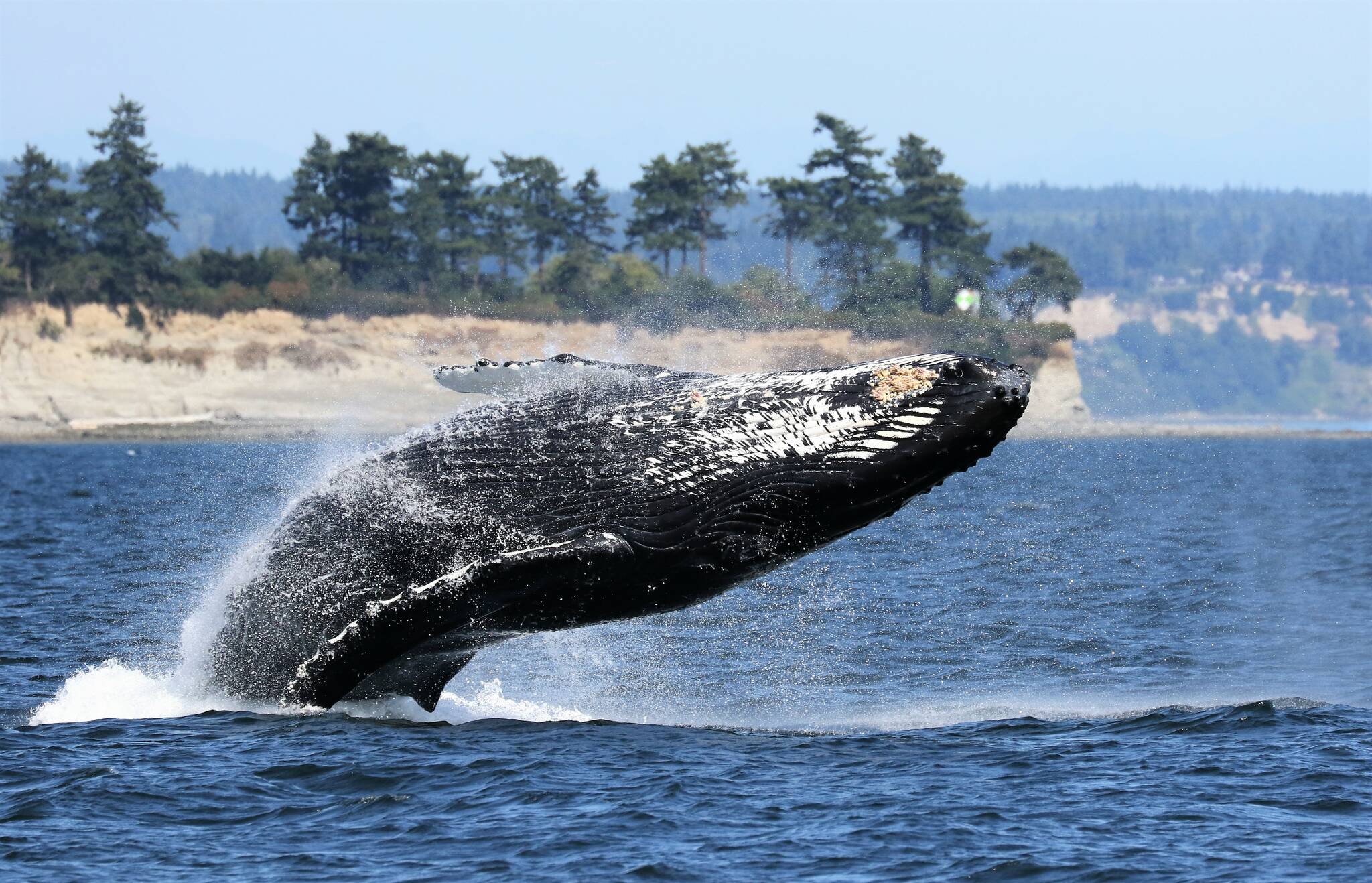Herman Melville once described humpback whales as “the most gamesome and lighthearted of all the world’s whales.”
“They’re exciting, they’re fun to watch because they’re acrobatic for no apparent reason,” said Howard Garrett, co-founder of the Whidbey-based Orca Network. “They seem to like to frolic around and splash with those big, long flippers.”
Sightings of the massive mammals near Whidbey Island have grown more frequent lately, with a slew of appearances recorded around Saratoga Passage and Holmes Harbor by the nonprofit whale-sighting network. As recently as Thursday, a humpback whale was spotted in Saratoga Passage.
According to Garrett, it’s very unusual to see the humpbacks in these areas where they haven’t been seen in recent times.
“It does show that they’re exploring and they’re discovering,” he said. “There has to be some food for them down there.”
Humpback whales feast on large quantities of forage fish and krill. They have baleen plates instead of teeth and do not eat other mammals.
Glimpses of humpbacks near South Whidbey occurred July 6-9, with observers reporting seeing some of the whales breaching or circumnavigating Baby Island.
Garrett views the new occurrences in Saratoga Passage as an expansion of their foraging areas. Until the 1990s, he said, it was not common to see humpbacks swimming in the Salish Sea.
Humpback whales have a history of being hunted, almost to extinction. According to a 2020 article from Time Magazine, since the passing of a ban on commercial whaling in 1986, the population has rebounded and is thought to be at 93% of its original size.
In 2016, Cascadia Research Collective in Olympia estimated that about 1,600 humpback whales feed off the west coast of North America, including as many as 500 off the coasts of Washington and British Columbia. The worldwide estimate is 85,000.
The 40-ton mammals are found in every ocean in the world and their giant pectoral fins can grow up to 16 feet in length, according to National Geographic.
Humpback whales follow a migratory pattern that takes them through the Pacific Northwest during the summer months. They swim south to breed and nurse their calves. Garett knows of three generations of humpbacks that swim into the Salish Sea every year.
He said the population has been gradually increasing since the 1990s, around the time anti-whaling laws were established. Sightings of them in Saratoga Passage may not have been so uncommon 100 years ago, before they started being hunted in large quantities.
Sightings have also increased by Port Defiance and farther south. Garrett explained that there are good conditions for forage fish and krill this year.
“We’re in this extended La Nina, which is cooler surface waters,” he said. “That is really good for productivity for the base of the food web in the ocean. That helps to bring out populations in very large numbers.”
Sightings of humpback whales can be reported to the Orca Network Facebook page, at orcanetwork.org or by calling 866-ORCANET (672-2638).
An earlier version of this story attributed a photo to the incorrect photographer. It has since been updated with the correct information.



